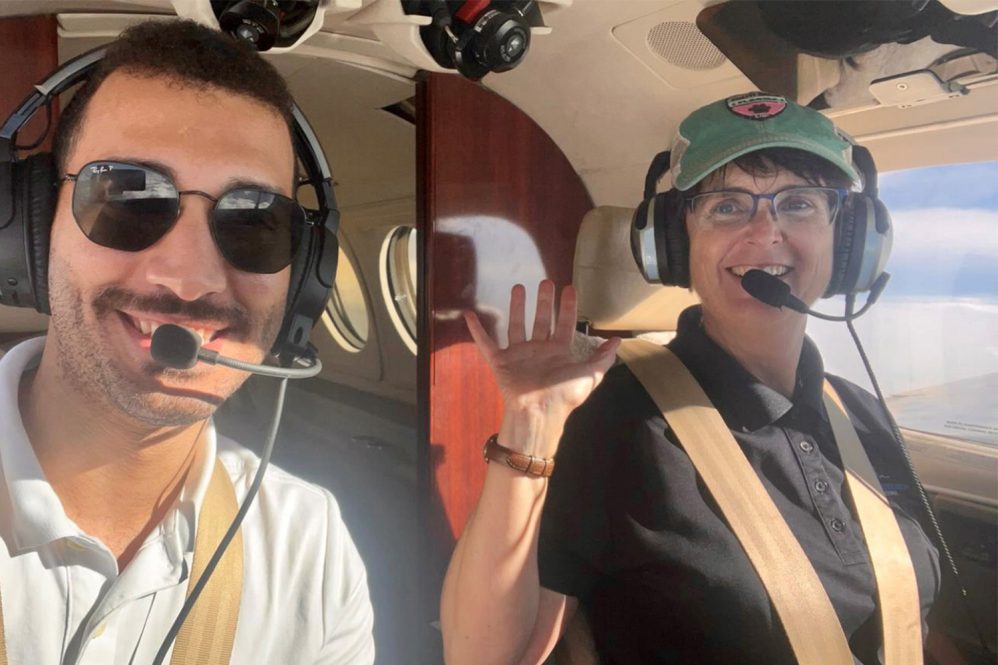Last fall, Janna Greenhalgh ’01 (CLAS) tried to make it rain over Saudi Arabia by spraying a salt mixture into thunderstorm clouds from flares attached to her small plane. The technique, called cloud seeding, increases precipitation — particularly welcome there, as the dry kingdom gets less than four inches of rain a year. A natural resources pilot, Greenhalgh typically flies over her home state of Idaho, triggering mountain snow that will melt and bring water to that desert-like region.
When her company teamed up with the Saudi government on last fall’s high-profile project, it took workplace challenges to the next level, she says, as companies with different cultures, languages, alphabets, numbers, calendars, and laws joined in the scientific endeavor. The only woman on the project in a country with different legal and cultural structures for women, Greenhalgh was conscious of being a representative of her company and her country. She says she stayed acutely aware of the potential influence she might have on this job “more so than on other jobs that I’ve done.”
While most of her work these days involves cloud seeding, she also has conducted visual animal surveys — flying over Cape Cod to track right whales and over Nevada to count desert bighorn sheep. She also maps wildfires, making nighttime passes over blazes and relaying information to firefighters to help them plan their attacks. She admits that some of her missions are high-risk but says she is always well prepared. “Every pilot practices for emergencies. It just becomes part of the job.”



